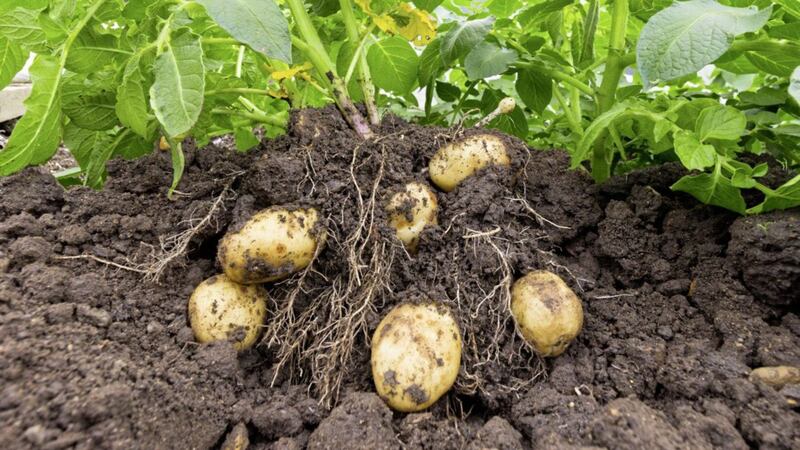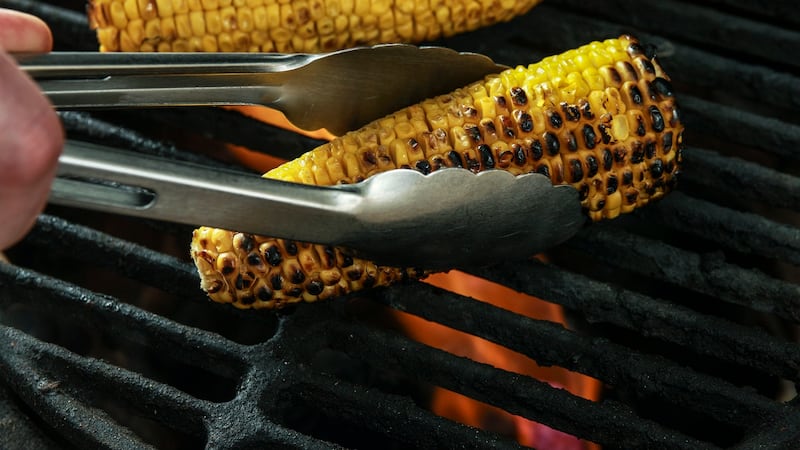SPUDS – who doesn’t love them? Chipped, mashed, baked or steamed, they have been the staple of the Irish diet for centuries. The potato’s popularity stems from its simplicity. It is not an overly demanding crop, it doesn’t require great technical ability to grow and more often than not it delivers, providing a good yield of reasonably good quality. Of course, things can go wrong, with disastrous consequences but, blight notwithstanding, the potato is a robust and reliable plant.
I must confess that it’s probably been a decade since I last grew spuds. While my raised bed system has many advantages, one drawback is that their 4’ x 6’ dimensions mean they don’t accommodate too many potato plants. The bed is therefore better utilised with salads, brassicas and beets – plants that won’t fail when grown intensively.
But I’m breaking new ground or, more precisely, returning to a patch that I cultivated previously but have neglected in recent years. The idea is to use the potato crop to ‘clean’ the ground, which means loosening up the earth, while suppressing weed growth and making it amenable to the more sensitive crops that will follow.
The drills – lines of mounded earth – were prepared last week and as you read this, weather permitting, I should be sowing this year’s crop of earlies. The advantage of earlies for the gardener is that they’ve usually completed most of their life cycle by the time the threat of blight, an airborne pathogen that loves Ireland’s moist climate, becomes active around mid-summer.
Ahead of buying my seed potato, I consulted the indispensable spud growers’ bible – The Potato Book by Alan Romans. Based on a lifetime’s experience of growing and studying potatoes, the book offers not only a potted history of Ireland’s favourite vegetable but a guide to the most suitable varieties for your requirements.
Guided by availability from my Co Down supplier, I’ve opted for British Queens, a Scottish second early variety bred by Archibald Finlay in the late 1800s. High yielding and boasting the RHS’s Award of Garden Merit, Romans captures the British Queen’s appeal succinctly: “Its great flavour and dry, floury texture is legendary.”
The tubers arrived more than a fortnight ago but rather than leave them sitting in a box until planting, I’ve decided to ‘chit’ or sprout them. There’s some debate over the efficacy of this practice but when you’re growing on small scale, it’s worth considering to give your potatoes a head start.
The idea is to place the potatoes ‘rose end’ up – that’s the end that shows signs of sprouting – in a bright, cool area, where the eyes will develop sprouts. These should ideally be a short and a purple colour, not the long white sprouts you’d find at the back of a student’s kitchen cupboard.
When it’s planting time, which is dictated by your own climatic circumstances, remove all but three or four of the sprouts with your thumbnail, as too many tends to result in a higher number of smaller potatoes. Handling the tubers carefully, plant them with the sprouts pointing upwards in a trench the depth of your hand. First earlies should be planted about one foot apart, with second earlies and maincrop given a little more room. As the shoots appear above ground, ‘earth up’ each plant by covering it with a ridge of soil so that the shoots are just buried and repeat this process for an initial period.
In 16-17 weeks’ time, your crop should be ready to harvest.








